THE 38TH BRAZILIAN ART PANORAMA: ECOLOGY AND FUTURE
The Museum of Modern Art of São Paulo presents the 38th Panorama of Brazilian Art: Mil Graus [A thousand degrees], an exhibition curated by Germano Dushá and Thiago de Paula Souza, and co-curated by Ariana Nuala, whose title evokes the idea of a “heat-limit,” where everything is transformed, referring to the intense climatic and metaphysical conditions that challenge and lead to inevitable processes of transmutation. In this edition, the MAM biennial exhibition presents 34 artists from 16 Brazilian states.
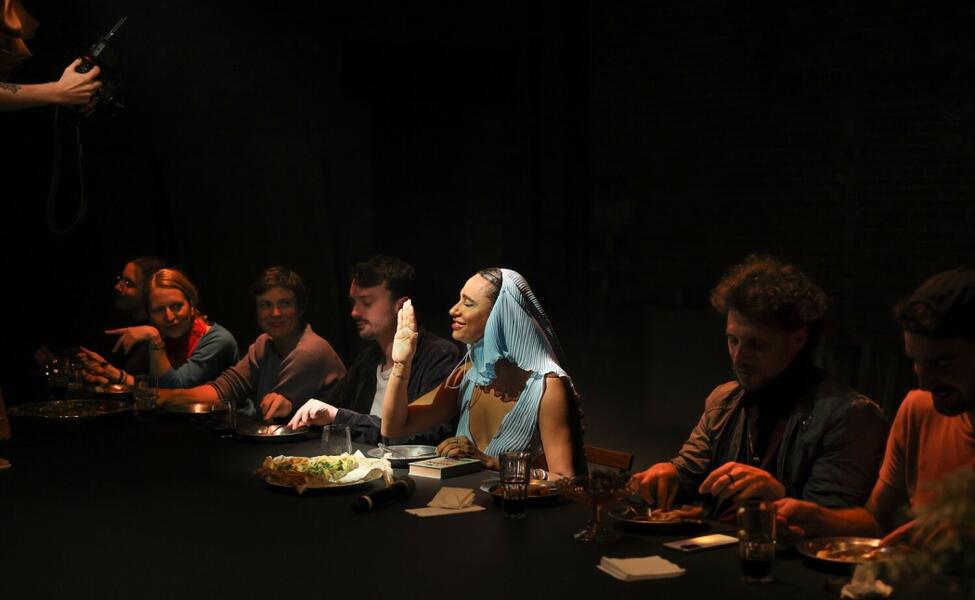
Due to the renovation of Ibirapuera Park’s marquee in the area where MAM is located, this edition of the Panorama will be shown at the Museum of Contemporary Art at the São Paulo University (MAC USP), a partner institution that shares the same origins as MAM. The exhibition will occupy parts of the ground floor and the third floor of MAC USP with more than 130 works, 79 of which are original pieces created for the 38th Panorama.
The curatorial proposal of the 38th Panorama of Brazilian Art is to critically elaborate on the current reality of Brazil under the notion of heat-limit, a concept that refers to a temperature at which everything melts, disintegrates and transforms. The project seeks to outline a multidimensional horizon of contemporary Brazilian artistic production, establishing points of contact and contrast between different investigations and practices that share a high energetic intensity.
The research conducted by the curators was guided by five thematic axes: General Ecology, Original Territories, Tropical Lead, Body-Devices, and Trances and Crossings. The axes do not serve as nuclei or segments of the exhibition, but rather as guiding threads that instigate reflections and interpretations, outlining possible relations between the works based on these perspectives.
-
Rop Cateh Alma pintada em Terra de Encantaría dos Akroá Gamella with Gê Viana and Thiago Martins de Melo, Enchantment Ground, 2018. Photo: Ana Mendes/Colectivo Pyhãn.
-
Melissa de Oliveira, Aquecimento, 2024. Courtesy of the artist.
-
Frederico Filippi, Moquém – Game Meat, 2023-24. Work in progress. Photo: Estúdio em Obra.
-
View of MEXA, The Last Supper, 2024. Photo: Anna Van Waeg.
-
Donna Romana, Bom Jesus de Nazaré Center, Jacuba Ranch, Natividade, To, since 1989. Photo: Emerson Silva.
-
Rop Cateh Alma pintada em Terra de Encantaría dos Akroá Gamella with Gê Viana and Thiago Martins de Melo, Enchantment Ground, 2018. Photo: Ana Mendes/Colectivo Pyhãn.
Artists: Adriano Amaral (São Paulo), Advânio Lessa (Minas Gerais), Ana Clara Tito (Rio de Janeiro), Antonio Tarsis (Bahia), Davi Pontes (Rio de Janeiro), Dona Romana (Tocantins), Frederico Filippi (São Paulo), Gabriel Massan (Rio de Janeiro), Ivan Campos (Acre), Jayme Fygura (Bahia), Jonas Van & Juno B. (Ceará), José Adário dos Santos (Bahia), Joseca Mokahesi Yanomami (Roraima), Labō (Pará) & Rafaela Kennedy (Amazonas), Laís Amaral (Rio de Janeiro), Lucas Arruda (São Paulo), Marcus Deusdedit (Minas Gerais), Maria Lira Marques (Minas Gerais), Marina Woisky (São Paulo), Marlene Almeida (PB), Melissa de Oliveira (Rio de Janeiro), Mestre Nado (Pernambuco), MEXA, (São Paulo), Noara Quintana (Santa Catarina), Paulo Nimer Pjota (São Paulo), Paulo Pires (Mato Grosso), Rafael RG (São Paulo), Rebeca Carapiá (Bahia), Rop Cateh—Alma pintada em Terra de Encantaria dos Akroá Gamella (Maranhão) in collaboration with com Gê Viana (Maranhão) and Thiago Martins de Melo (Maranhão), Sallisa Rosa (Goiás), Solange Pessoa (Minas Gerais), Tropa do Gurilouko (Rio de Janeiro), Zahỳ Tentehar (Maranhão) and Zimar (Maranhão).
About the Panorama of Brazilian Art of MAM São Paulo
The series of exhibitions Panorama of Brazilian Art began in 1969 and happened simultaneously to the installation of MAM São Paulo at its headquarters on Ibirapuera Park’s marquee. The first editions of the Panorama left their marks on the history of the museum for contributing directly and effectively to the formation of its contemporary art collection. Throughout the 37 exhibitions held to date, MAM’s Panorama has sought to establish productive dialogues with different notions about the Brazilian artistic production, our history, culture and society. Held every two years, it always produces new reflections on the most critical debates in contemporary Brazil.
38th Panorama of Brazilian Art. Mil graus [A thousand degrees]. October 5, 2024–January 26, 2025
May interest you
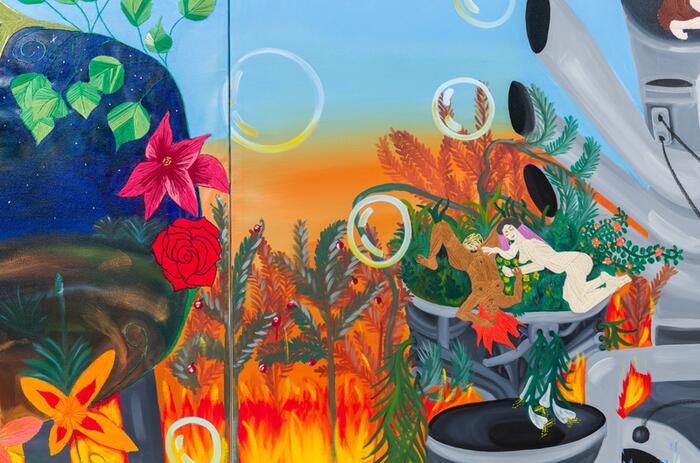
Siluetas sobre maleza [Silhouettes on grass] is a group exhibition at Museo Jumex that explores the ways in which bodies exist and inhabit territory. Spanning several generations, the exhibition features artists who explore the intertwined associations of body, land and identity in Latin America's history and present: Minia Biabiany (Guadalupe, 1988), Vivian Caccuri (Brazil, 1986), Frieda Toranzo Jaeger (Mexico, 1988), Ana Mendieta (Cuba, 1948 - USA, 1985), Nohemí Pérez (Colombia, 1962) and Vivian Suter (Argentina, 1949).
BODIES & TERRITORY: A GROUP EXHIBITION AT JUMEX MUSEUM
Siluetas sobre maleza [Silhouettes on grass] is a group exhibition at Museo Jumex that explores the ways in which bodies exist and inhabit territory. Spanning several generations, the exhibition features artists who explore the intertwined associations of body, land and identity in Latin America's history and present: Minia Biabiany (Guadalupe, 1988), Vivian Caccuri (Brazil, 1986), Frieda Toranzo Jaeger (Mexico, 1988), Ana Mendieta (Cuba, 1948 - USA, 1985), Nohemí Pérez (Colombia, 1962) and Vivian Suter (Argentina, 1949).

Siluetas sobre maleza [Silhouettes on grass] is a group exhibition at Museo Jumex that explores the ways in which bodies exist and inhabit territory. Spanning several generations, the exhibition features artists who explore the intertwined associations of body, land and identity in Latin America's history and present: Minia Biabiany (Guadalupe, 1988), Vivian Caccuri (Brazil, 1986), Frieda Toranzo Jaeger (Mexico, 1988), Ana Mendieta (Cuba, 1948 - USA, 1985), Nohemí Pérez (Colombia, 1962) and Vivian Suter (Argentina, 1949).
BODIES & TERRITORY: A GROUP EXHIBITION AT JUMEX MUSEUM
Siluetas sobre maleza [Silhouettes on grass] is a group exhibition at Museo Jumex that explores the ways in which bodies exist and inhabit territory. Spanning several generations, the exhibition features artists who explore the intertwined associations of body, land and identity in Latin America's history and present: Minia Biabiany (Guadalupe, 1988), Vivian Caccuri (Brazil, 1986), Frieda Toranzo Jaeger (Mexico, 1988), Ana Mendieta (Cuba, 1948 - USA, 1985), Nohemí Pérez (Colombia, 1962) and Vivian Suter (Argentina, 1949).
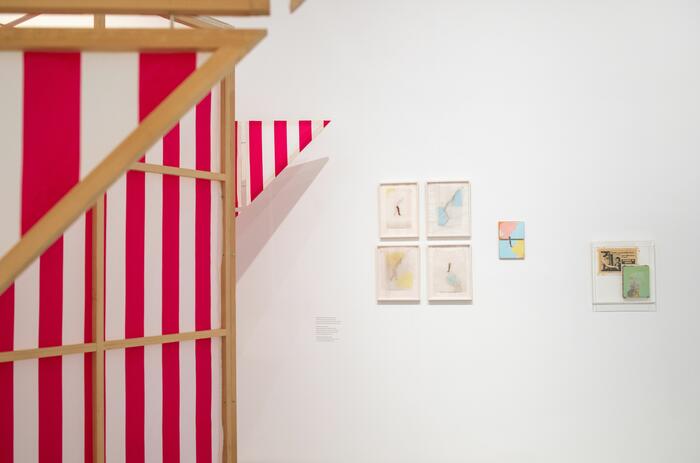
“I imagine the museum as an archipelago. It is not a continent, but an archipelago (...) The idea today is to put the world in contact with the world, to put some parts of the world in contact with other parts of the world... We must multiply the number of worlds inside museums”. Édouard Glissant (Sainte-Marie, Martinique, 1929-Paris, France, 2011) expressed his vision of museum functionality in this metaphorical way in his work Poetics of Relationship (1990).
CAN THE ARCHIPELAGO ENTER THE MUSEUM? IBEROAMERICA IN THE PROPOSAL OF THE HELGA DE ALVEAR MUSEUM
“I imagine the museum as an archipelago. It is not a continent, but an archipelago (...) The idea today is to put the world in contact with the world, to put some parts of the world in contact with other parts of the world... We must multiply the number of worlds inside museums”. Édouard Glissant (Sainte-Marie, Martinique, 1929-Paris, France, 2011) expressed his vision of museum functionality in this metaphorical way in his work Poetics of Relationship (1990).
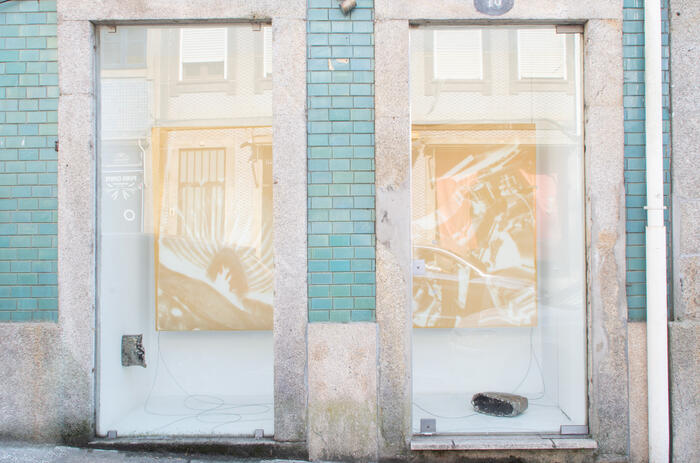
Kubikulo presents in its Oporto gallery Sol Raso, an installation by Gabriel Ribeiro (Rio de Janeiro, Brazil, 1990) that is presented as a material and superficial photographic event on polyurethane foams in which the evolution of the exposure of the materials to the elements and the sun for thirty days is captured.
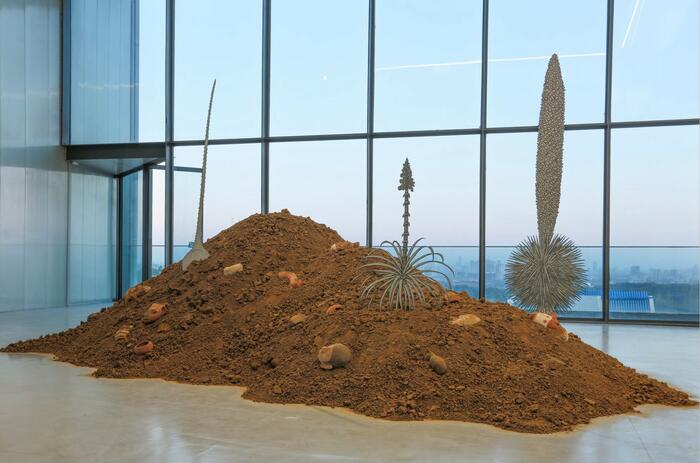
Fundación Ama Amoedo is pleased to announce the Grantees for its second edition of the Fundación Ama Amoedo Grants. With more than 2000 applications, 10 projects were selected in the categories: Artists, Art and Social Engagement, Organizations, and Publications. Each Awardee will receive support of 10,000 dollars for the research and development of their proposals. The winners are: Alejandro Cruz (Uruguay), Clara Esborraz (Argentina), Ana María Montenegro (Colombia), Davi Pontes (Brazil), Instituto Tele Arte (Chile), Museo MARC (Argentina), Aldeia-Escola Floresta (Brazil), Archivo de la Memoria Trans (Argentina), El Flasherito (Argentina), and Claudia Martínez Garay (Peru).
ANNOUNCEMENT OF THE WINNERS OF THE AMA AMOEDO FOUNDATION SCHOLARSHIPS 2024
Fundación Ama Amoedo is pleased to announce the Grantees for its second edition of the Fundación Ama Amoedo Grants. With more than 2000 applications, 10 projects were selected in the categories: Artists, Art and Social Engagement, Organizations, and Publications. Each Awardee will receive support of 10,000 dollars for the research and development of their proposals. The winners are: Alejandro Cruz (Uruguay), Clara Esborraz (Argentina), Ana María Montenegro (Colombia), Davi Pontes (Brazil), Instituto Tele Arte (Chile), Museo MARC (Argentina), Aldeia-Escola Floresta (Brazil), Archivo de la Memoria Trans (Argentina), El Flasherito (Argentina), and Claudia Martínez Garay (Peru).
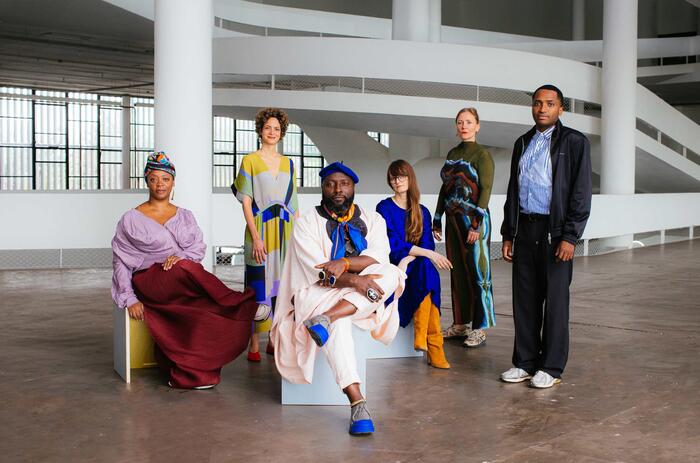
Under the general curatorship of Bonaventure by Soh Bejen Ndikung, the 36th São Paulo Biennial announces its title, curatorial concept, collaborators and visual identity, in addition to informing about an important change in its exhibition period. The title will be: Nem todo viandante anda estradas / Da humanidade como prática [Not All Travelers Walk Roads / Of Humanity as Practice].
THEME AND CURATORIAL CONCEPT FOR THE 36TH SÃO PAULO BIENNIAL ANNOUNCED
Under the general curatorship of Bonaventure by Soh Bejen Ndikung, the 36th São Paulo Biennial announces its title, curatorial concept, collaborators and visual identity, in addition to informing about an important change in its exhibition period. The title will be: Nem todo viandante anda estradas / Da humanidade como prática [Not All Travelers Walk Roads / Of Humanity as Practice].
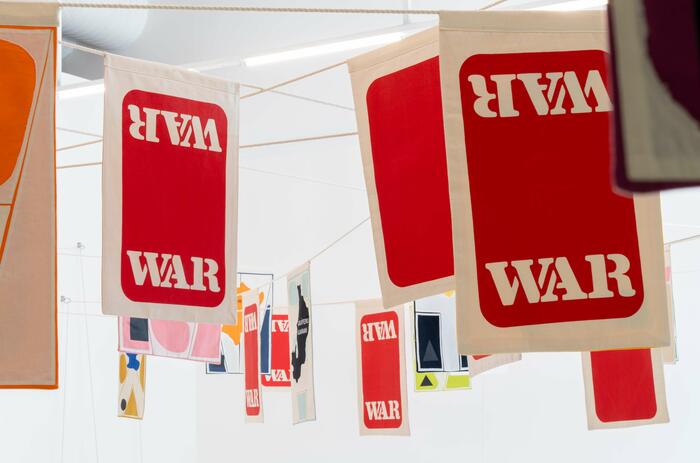
Inhotim is presenting three new projects at the end of 2024, in which the protagonists are Rebeca Carapiá, Pipilotti Rist and Rivane Neuenschwander. Three very different strategies by names of different visibilities and generations, which help to forge a moment in the institution that seems more connected to the fascinating and special nature of the place, without leaving aside lively questions about the strange days we are living through.
MAGIC LIGHTS, BOILING SURFACES - REBECA CARAPIÁ, PIPILOTTI RIST AND RIVANE NEUENSCHWANDER
Inhotim is presenting three new projects at the end of 2024, in which the protagonists are Rebeca Carapiá, Pipilotti Rist and Rivane Neuenschwander. Three very different strategies by names of different visibilities and generations, which help to forge a moment in the institution that seems more connected to the fascinating and special nature of the place, without leaving aside lively questions about the strange days we are living through.
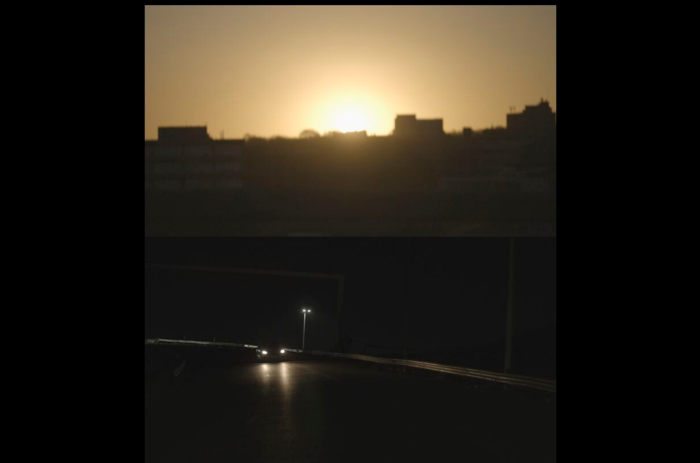
Dim Corners is an evocative exhibition in Johannesburg featuring new works by Brazilian artist Leticia Ramos and South African artist Zen Marie. The exhibition takes into account the city’s frequent energy shortages, and also the recent blackouts that São Paulo had experienced since this project started, weaving a narrative that intertwines the immediate physical impact with the broader, insidious issues of climate change and environmental racism.
LETICIA RAMOS & ZEN MARIE IN A COLLABORATIVE PROJECT
Dim Corners is an evocative exhibition in Johannesburg featuring new works by Brazilian artist Leticia Ramos and South African artist Zen Marie. The exhibition takes into account the city’s frequent energy shortages, and also the recent blackouts that São Paulo had experienced since this project started, weaving a narrative that intertwines the immediate physical impact with the broader, insidious issues of climate change and environmental racism.

Siluetas sobre maleza [Silhouettes on grass] is a group exhibition at Museo Jumex that explores the ways in which bodies exist and inhabit territory. Spanning several generations, the exhibition features artists who explore the intertwined associations of body, land and identity in Latin America's history and present: Minia Biabiany (Guadalupe, 1988), Vivian Caccuri (Brazil, 1986), Frieda Toranzo Jaeger (Mexico, 1988), Ana Mendieta (Cuba, 1948 - USA, 1985), Nohemí Pérez (Colombia, 1962) and Vivian Suter (Argentina, 1949).
BODIES & TERRITORY: A GROUP EXHIBITION AT JUMEX MUSEUM
Siluetas sobre maleza [Silhouettes on grass] is a group exhibition at Museo Jumex that explores the ways in which bodies exist and inhabit territory. Spanning several generations, the exhibition features artists who explore the intertwined associations of body, land and identity in Latin America's history and present: Minia Biabiany (Guadalupe, 1988), Vivian Caccuri (Brazil, 1986), Frieda Toranzo Jaeger (Mexico, 1988), Ana Mendieta (Cuba, 1948 - USA, 1985), Nohemí Pérez (Colombia, 1962) and Vivian Suter (Argentina, 1949).

“I imagine the museum as an archipelago. It is not a continent, but an archipelago (...) The idea today is to put the world in contact with the world, to put some parts of the world in contact with other parts of the world... We must multiply the number of worlds inside museums”. Édouard Glissant (Sainte-Marie, Martinique, 1929-Paris, France, 2011) expressed his vision of museum functionality in this metaphorical way in his work Poetics of Relationship (1990).
CAN THE ARCHIPELAGO ENTER THE MUSEUM? IBEROAMERICA IN THE PROPOSAL OF THE HELGA DE ALVEAR MUSEUM
“I imagine the museum as an archipelago. It is not a continent, but an archipelago (...) The idea today is to put the world in contact with the world, to put some parts of the world in contact with other parts of the world... We must multiply the number of worlds inside museums”. Édouard Glissant (Sainte-Marie, Martinique, 1929-Paris, France, 2011) expressed his vision of museum functionality in this metaphorical way in his work Poetics of Relationship (1990).

Kubikulo presents in its Oporto gallery Sol Raso, an installation by Gabriel Ribeiro (Rio de Janeiro, Brazil, 1990) that is presented as a material and superficial photographic event on polyurethane foams in which the evolution of the exposure of the materials to the elements and the sun for thirty days is captured.

Fundación Ama Amoedo is pleased to announce the Grantees for its second edition of the Fundación Ama Amoedo Grants. With more than 2000 applications, 10 projects were selected in the categories: Artists, Art and Social Engagement, Organizations, and Publications. Each Awardee will receive support of 10,000 dollars for the research and development of their proposals. The winners are: Alejandro Cruz (Uruguay), Clara Esborraz (Argentina), Ana María Montenegro (Colombia), Davi Pontes (Brazil), Instituto Tele Arte (Chile), Museo MARC (Argentina), Aldeia-Escola Floresta (Brazil), Archivo de la Memoria Trans (Argentina), El Flasherito (Argentina), and Claudia Martínez Garay (Peru).
ANNOUNCEMENT OF THE WINNERS OF THE AMA AMOEDO FOUNDATION SCHOLARSHIPS 2024
Fundación Ama Amoedo is pleased to announce the Grantees for its second edition of the Fundación Ama Amoedo Grants. With more than 2000 applications, 10 projects were selected in the categories: Artists, Art and Social Engagement, Organizations, and Publications. Each Awardee will receive support of 10,000 dollars for the research and development of their proposals. The winners are: Alejandro Cruz (Uruguay), Clara Esborraz (Argentina), Ana María Montenegro (Colombia), Davi Pontes (Brazil), Instituto Tele Arte (Chile), Museo MARC (Argentina), Aldeia-Escola Floresta (Brazil), Archivo de la Memoria Trans (Argentina), El Flasherito (Argentina), and Claudia Martínez Garay (Peru).

Under the general curatorship of Bonaventure by Soh Bejen Ndikung, the 36th São Paulo Biennial announces its title, curatorial concept, collaborators and visual identity, in addition to informing about an important change in its exhibition period. The title will be: Nem todo viandante anda estradas / Da humanidade como prática [Not All Travelers Walk Roads / Of Humanity as Practice].
THEME AND CURATORIAL CONCEPT FOR THE 36TH SÃO PAULO BIENNIAL ANNOUNCED
Under the general curatorship of Bonaventure by Soh Bejen Ndikung, the 36th São Paulo Biennial announces its title, curatorial concept, collaborators and visual identity, in addition to informing about an important change in its exhibition period. The title will be: Nem todo viandante anda estradas / Da humanidade como prática [Not All Travelers Walk Roads / Of Humanity as Practice].

Inhotim is presenting three new projects at the end of 2024, in which the protagonists are Rebeca Carapiá, Pipilotti Rist and Rivane Neuenschwander. Three very different strategies by names of different visibilities and generations, which help to forge a moment in the institution that seems more connected to the fascinating and special nature of the place, without leaving aside lively questions about the strange days we are living through.
MAGIC LIGHTS, BOILING SURFACES - REBECA CARAPIÁ, PIPILOTTI RIST AND RIVANE NEUENSCHWANDER
Inhotim is presenting three new projects at the end of 2024, in which the protagonists are Rebeca Carapiá, Pipilotti Rist and Rivane Neuenschwander. Three very different strategies by names of different visibilities and generations, which help to forge a moment in the institution that seems more connected to the fascinating and special nature of the place, without leaving aside lively questions about the strange days we are living through.

Dim Corners is an evocative exhibition in Johannesburg featuring new works by Brazilian artist Leticia Ramos and South African artist Zen Marie. The exhibition takes into account the city’s frequent energy shortages, and also the recent blackouts that São Paulo had experienced since this project started, weaving a narrative that intertwines the immediate physical impact with the broader, insidious issues of climate change and environmental racism.
LETICIA RAMOS & ZEN MARIE IN A COLLABORATIVE PROJECT
Dim Corners is an evocative exhibition in Johannesburg featuring new works by Brazilian artist Leticia Ramos and South African artist Zen Marie. The exhibition takes into account the city’s frequent energy shortages, and also the recent blackouts that São Paulo had experienced since this project started, weaving a narrative that intertwines the immediate physical impact with the broader, insidious issues of climate change and environmental racism.

Siluetas sobre maleza [Silhouettes on grass] is a group exhibition at Museo Jumex that explores the ways in which bodies exist and inhabit territory. Spanning several generations, the exhibition features artists who explore the intertwined associations of body, land and identity in Latin America's history and present: Minia Biabiany (Guadalupe, 1988), Vivian Caccuri (Brazil, 1986), Frieda Toranzo Jaeger (Mexico, 1988), Ana Mendieta (Cuba, 1948 - USA, 1985), Nohemí Pérez (Colombia, 1962) and Vivian Suter (Argentina, 1949).
BODIES & TERRITORY: A GROUP EXHIBITION AT JUMEX MUSEUM
Siluetas sobre maleza [Silhouettes on grass] is a group exhibition at Museo Jumex that explores the ways in which bodies exist and inhabit territory. Spanning several generations, the exhibition features artists who explore the intertwined associations of body, land and identity in Latin America's history and present: Minia Biabiany (Guadalupe, 1988), Vivian Caccuri (Brazil, 1986), Frieda Toranzo Jaeger (Mexico, 1988), Ana Mendieta (Cuba, 1948 - USA, 1985), Nohemí Pérez (Colombia, 1962) and Vivian Suter (Argentina, 1949).

“I imagine the museum as an archipelago. It is not a continent, but an archipelago (...) The idea today is to put the world in contact with the world, to put some parts of the world in contact with other parts of the world... We must multiply the number of worlds inside museums”. Édouard Glissant (Sainte-Marie, Martinique, 1929-Paris, France, 2011) expressed his vision of museum functionality in this metaphorical way in his work Poetics of Relationship (1990).
CAN THE ARCHIPELAGO ENTER THE MUSEUM? IBEROAMERICA IN THE PROPOSAL OF THE HELGA DE ALVEAR MUSEUM
“I imagine the museum as an archipelago. It is not a continent, but an archipelago (...) The idea today is to put the world in contact with the world, to put some parts of the world in contact with other parts of the world... We must multiply the number of worlds inside museums”. Édouard Glissant (Sainte-Marie, Martinique, 1929-Paris, France, 2011) expressed his vision of museum functionality in this metaphorical way in his work Poetics of Relationship (1990).

Kubikulo presents in its Oporto gallery Sol Raso, an installation by Gabriel Ribeiro (Rio de Janeiro, Brazil, 1990) that is presented as a material and superficial photographic event on polyurethane foams in which the evolution of the exposure of the materials to the elements and the sun for thirty days is captured.

Fundación Ama Amoedo is pleased to announce the Grantees for its second edition of the Fundación Ama Amoedo Grants. With more than 2000 applications, 10 projects were selected in the categories: Artists, Art and Social Engagement, Organizations, and Publications. Each Awardee will receive support of 10,000 dollars for the research and development of their proposals. The winners are: Alejandro Cruz (Uruguay), Clara Esborraz (Argentina), Ana María Montenegro (Colombia), Davi Pontes (Brazil), Instituto Tele Arte (Chile), Museo MARC (Argentina), Aldeia-Escola Floresta (Brazil), Archivo de la Memoria Trans (Argentina), El Flasherito (Argentina), and Claudia Martínez Garay (Peru).
ANNOUNCEMENT OF THE WINNERS OF THE AMA AMOEDO FOUNDATION SCHOLARSHIPS 2024
Fundación Ama Amoedo is pleased to announce the Grantees for its second edition of the Fundación Ama Amoedo Grants. With more than 2000 applications, 10 projects were selected in the categories: Artists, Art and Social Engagement, Organizations, and Publications. Each Awardee will receive support of 10,000 dollars for the research and development of their proposals. The winners are: Alejandro Cruz (Uruguay), Clara Esborraz (Argentina), Ana María Montenegro (Colombia), Davi Pontes (Brazil), Instituto Tele Arte (Chile), Museo MARC (Argentina), Aldeia-Escola Floresta (Brazil), Archivo de la Memoria Trans (Argentina), El Flasherito (Argentina), and Claudia Martínez Garay (Peru).

Under the general curatorship of Bonaventure by Soh Bejen Ndikung, the 36th São Paulo Biennial announces its title, curatorial concept, collaborators and visual identity, in addition to informing about an important change in its exhibition period. The title will be: Nem todo viandante anda estradas / Da humanidade como prática [Not All Travelers Walk Roads / Of Humanity as Practice].
THEME AND CURATORIAL CONCEPT FOR THE 36TH SÃO PAULO BIENNIAL ANNOUNCED
Under the general curatorship of Bonaventure by Soh Bejen Ndikung, the 36th São Paulo Biennial announces its title, curatorial concept, collaborators and visual identity, in addition to informing about an important change in its exhibition period. The title will be: Nem todo viandante anda estradas / Da humanidade como prática [Not All Travelers Walk Roads / Of Humanity as Practice].

Inhotim is presenting three new projects at the end of 2024, in which the protagonists are Rebeca Carapiá, Pipilotti Rist and Rivane Neuenschwander. Three very different strategies by names of different visibilities and generations, which help to forge a moment in the institution that seems more connected to the fascinating and special nature of the place, without leaving aside lively questions about the strange days we are living through.
MAGIC LIGHTS, BOILING SURFACES - REBECA CARAPIÁ, PIPILOTTI RIST AND RIVANE NEUENSCHWANDER
Inhotim is presenting three new projects at the end of 2024, in which the protagonists are Rebeca Carapiá, Pipilotti Rist and Rivane Neuenschwander. Three very different strategies by names of different visibilities and generations, which help to forge a moment in the institution that seems more connected to the fascinating and special nature of the place, without leaving aside lively questions about the strange days we are living through.

Dim Corners is an evocative exhibition in Johannesburg featuring new works by Brazilian artist Leticia Ramos and South African artist Zen Marie. The exhibition takes into account the city’s frequent energy shortages, and also the recent blackouts that São Paulo had experienced since this project started, weaving a narrative that intertwines the immediate physical impact with the broader, insidious issues of climate change and environmental racism.
LETICIA RAMOS & ZEN MARIE IN A COLLABORATIVE PROJECT
Dim Corners is an evocative exhibition in Johannesburg featuring new works by Brazilian artist Leticia Ramos and South African artist Zen Marie. The exhibition takes into account the city’s frequent energy shortages, and also the recent blackouts that São Paulo had experienced since this project started, weaving a narrative that intertwines the immediate physical impact with the broader, insidious issues of climate change and environmental racism.

Siluetas sobre maleza [Silhouettes on grass] is a group exhibition at Museo Jumex that explores the ways in which bodies exist and inhabit territory. Spanning several generations, the exhibition features artists who explore the intertwined associations of body, land and identity in Latin America's history and present: Minia Biabiany (Guadalupe, 1988), Vivian Caccuri (Brazil, 1986), Frieda Toranzo Jaeger (Mexico, 1988), Ana Mendieta (Cuba, 1948 - USA, 1985), Nohemí Pérez (Colombia, 1962) and Vivian Suter (Argentina, 1949).
BODIES & TERRITORY: A GROUP EXHIBITION AT JUMEX MUSEUM
Siluetas sobre maleza [Silhouettes on grass] is a group exhibition at Museo Jumex that explores the ways in which bodies exist and inhabit territory. Spanning several generations, the exhibition features artists who explore the intertwined associations of body, land and identity in Latin America's history and present: Minia Biabiany (Guadalupe, 1988), Vivian Caccuri (Brazil, 1986), Frieda Toranzo Jaeger (Mexico, 1988), Ana Mendieta (Cuba, 1948 - USA, 1985), Nohemí Pérez (Colombia, 1962) and Vivian Suter (Argentina, 1949).

“I imagine the museum as an archipelago. It is not a continent, but an archipelago (...) The idea today is to put the world in contact with the world, to put some parts of the world in contact with other parts of the world... We must multiply the number of worlds inside museums”. Édouard Glissant (Sainte-Marie, Martinique, 1929-Paris, France, 2011) expressed his vision of museum functionality in this metaphorical way in his work Poetics of Relationship (1990).
CAN THE ARCHIPELAGO ENTER THE MUSEUM? IBEROAMERICA IN THE PROPOSAL OF THE HELGA DE ALVEAR MUSEUM
“I imagine the museum as an archipelago. It is not a continent, but an archipelago (...) The idea today is to put the world in contact with the world, to put some parts of the world in contact with other parts of the world... We must multiply the number of worlds inside museums”. Édouard Glissant (Sainte-Marie, Martinique, 1929-Paris, France, 2011) expressed his vision of museum functionality in this metaphorical way in his work Poetics of Relationship (1990).

Kubikulo presents in its Oporto gallery Sol Raso, an installation by Gabriel Ribeiro (Rio de Janeiro, Brazil, 1990) that is presented as a material and superficial photographic event on polyurethane foams in which the evolution of the exposure of the materials to the elements and the sun for thirty days is captured.

Fundación Ama Amoedo is pleased to announce the Grantees for its second edition of the Fundación Ama Amoedo Grants. With more than 2000 applications, 10 projects were selected in the categories: Artists, Art and Social Engagement, Organizations, and Publications. Each Awardee will receive support of 10,000 dollars for the research and development of their proposals. The winners are: Alejandro Cruz (Uruguay), Clara Esborraz (Argentina), Ana María Montenegro (Colombia), Davi Pontes (Brazil), Instituto Tele Arte (Chile), Museo MARC (Argentina), Aldeia-Escola Floresta (Brazil), Archivo de la Memoria Trans (Argentina), El Flasherito (Argentina), and Claudia Martínez Garay (Peru).
ANNOUNCEMENT OF THE WINNERS OF THE AMA AMOEDO FOUNDATION SCHOLARSHIPS 2024
Fundación Ama Amoedo is pleased to announce the Grantees for its second edition of the Fundación Ama Amoedo Grants. With more than 2000 applications, 10 projects were selected in the categories: Artists, Art and Social Engagement, Organizations, and Publications. Each Awardee will receive support of 10,000 dollars for the research and development of their proposals. The winners are: Alejandro Cruz (Uruguay), Clara Esborraz (Argentina), Ana María Montenegro (Colombia), Davi Pontes (Brazil), Instituto Tele Arte (Chile), Museo MARC (Argentina), Aldeia-Escola Floresta (Brazil), Archivo de la Memoria Trans (Argentina), El Flasherito (Argentina), and Claudia Martínez Garay (Peru).

Under the general curatorship of Bonaventure by Soh Bejen Ndikung, the 36th São Paulo Biennial announces its title, curatorial concept, collaborators and visual identity, in addition to informing about an important change in its exhibition period. The title will be: Nem todo viandante anda estradas / Da humanidade como prática [Not All Travelers Walk Roads / Of Humanity as Practice].
THEME AND CURATORIAL CONCEPT FOR THE 36TH SÃO PAULO BIENNIAL ANNOUNCED
Under the general curatorship of Bonaventure by Soh Bejen Ndikung, the 36th São Paulo Biennial announces its title, curatorial concept, collaborators and visual identity, in addition to informing about an important change in its exhibition period. The title will be: Nem todo viandante anda estradas / Da humanidade como prática [Not All Travelers Walk Roads / Of Humanity as Practice].

Inhotim is presenting three new projects at the end of 2024, in which the protagonists are Rebeca Carapiá, Pipilotti Rist and Rivane Neuenschwander. Three very different strategies by names of different visibilities and generations, which help to forge a moment in the institution that seems more connected to the fascinating and special nature of the place, without leaving aside lively questions about the strange days we are living through.
MAGIC LIGHTS, BOILING SURFACES - REBECA CARAPIÁ, PIPILOTTI RIST AND RIVANE NEUENSCHWANDER
Inhotim is presenting three new projects at the end of 2024, in which the protagonists are Rebeca Carapiá, Pipilotti Rist and Rivane Neuenschwander. Three very different strategies by names of different visibilities and generations, which help to forge a moment in the institution that seems more connected to the fascinating and special nature of the place, without leaving aside lively questions about the strange days we are living through.

Dim Corners is an evocative exhibition in Johannesburg featuring new works by Brazilian artist Leticia Ramos and South African artist Zen Marie. The exhibition takes into account the city’s frequent energy shortages, and also the recent blackouts that São Paulo had experienced since this project started, weaving a narrative that intertwines the immediate physical impact with the broader, insidious issues of climate change and environmental racism.
LETICIA RAMOS & ZEN MARIE IN A COLLABORATIVE PROJECT
Dim Corners is an evocative exhibition in Johannesburg featuring new works by Brazilian artist Leticia Ramos and South African artist Zen Marie. The exhibition takes into account the city’s frequent energy shortages, and also the recent blackouts that São Paulo had experienced since this project started, weaving a narrative that intertwines the immediate physical impact with the broader, insidious issues of climate change and environmental racism.

Siluetas sobre maleza [Silhouettes on grass] is a group exhibition at Museo Jumex that explores the ways in which bodies exist and inhabit territory. Spanning several generations, the exhibition features artists who explore the intertwined associations of body, land and identity in Latin America's history and present: Minia Biabiany (Guadalupe, 1988), Vivian Caccuri (Brazil, 1986), Frieda Toranzo Jaeger (Mexico, 1988), Ana Mendieta (Cuba, 1948 - USA, 1985), Nohemí Pérez (Colombia, 1962) and Vivian Suter (Argentina, 1949).
BODIES & TERRITORY: A GROUP EXHIBITION AT JUMEX MUSEUM
Siluetas sobre maleza [Silhouettes on grass] is a group exhibition at Museo Jumex that explores the ways in which bodies exist and inhabit territory. Spanning several generations, the exhibition features artists who explore the intertwined associations of body, land and identity in Latin America's history and present: Minia Biabiany (Guadalupe, 1988), Vivian Caccuri (Brazil, 1986), Frieda Toranzo Jaeger (Mexico, 1988), Ana Mendieta (Cuba, 1948 - USA, 1985), Nohemí Pérez (Colombia, 1962) and Vivian Suter (Argentina, 1949).

“I imagine the museum as an archipelago. It is not a continent, but an archipelago (...) The idea today is to put the world in contact with the world, to put some parts of the world in contact with other parts of the world... We must multiply the number of worlds inside museums”. Édouard Glissant (Sainte-Marie, Martinique, 1929-Paris, France, 2011) expressed his vision of museum functionality in this metaphorical way in his work Poetics of Relationship (1990).
CAN THE ARCHIPELAGO ENTER THE MUSEUM? IBEROAMERICA IN THE PROPOSAL OF THE HELGA DE ALVEAR MUSEUM
“I imagine the museum as an archipelago. It is not a continent, but an archipelago (...) The idea today is to put the world in contact with the world, to put some parts of the world in contact with other parts of the world... We must multiply the number of worlds inside museums”. Édouard Glissant (Sainte-Marie, Martinique, 1929-Paris, France, 2011) expressed his vision of museum functionality in this metaphorical way in his work Poetics of Relationship (1990).

Kubikulo presents in its Oporto gallery Sol Raso, an installation by Gabriel Ribeiro (Rio de Janeiro, Brazil, 1990) that is presented as a material and superficial photographic event on polyurethane foams in which the evolution of the exposure of the materials to the elements and the sun for thirty days is captured.

Fundación Ama Amoedo is pleased to announce the Grantees for its second edition of the Fundación Ama Amoedo Grants. With more than 2000 applications, 10 projects were selected in the categories: Artists, Art and Social Engagement, Organizations, and Publications. Each Awardee will receive support of 10,000 dollars for the research and development of their proposals. The winners are: Alejandro Cruz (Uruguay), Clara Esborraz (Argentina), Ana María Montenegro (Colombia), Davi Pontes (Brazil), Instituto Tele Arte (Chile), Museo MARC (Argentina), Aldeia-Escola Floresta (Brazil), Archivo de la Memoria Trans (Argentina), El Flasherito (Argentina), and Claudia Martínez Garay (Peru).
ANNOUNCEMENT OF THE WINNERS OF THE AMA AMOEDO FOUNDATION SCHOLARSHIPS 2024
Fundación Ama Amoedo is pleased to announce the Grantees for its second edition of the Fundación Ama Amoedo Grants. With more than 2000 applications, 10 projects were selected in the categories: Artists, Art and Social Engagement, Organizations, and Publications. Each Awardee will receive support of 10,000 dollars for the research and development of their proposals. The winners are: Alejandro Cruz (Uruguay), Clara Esborraz (Argentina), Ana María Montenegro (Colombia), Davi Pontes (Brazil), Instituto Tele Arte (Chile), Museo MARC (Argentina), Aldeia-Escola Floresta (Brazil), Archivo de la Memoria Trans (Argentina), El Flasherito (Argentina), and Claudia Martínez Garay (Peru).

Under the general curatorship of Bonaventure by Soh Bejen Ndikung, the 36th São Paulo Biennial announces its title, curatorial concept, collaborators and visual identity, in addition to informing about an important change in its exhibition period. The title will be: Nem todo viandante anda estradas / Da humanidade como prática [Not All Travelers Walk Roads / Of Humanity as Practice].
THEME AND CURATORIAL CONCEPT FOR THE 36TH SÃO PAULO BIENNIAL ANNOUNCED
Under the general curatorship of Bonaventure by Soh Bejen Ndikung, the 36th São Paulo Biennial announces its title, curatorial concept, collaborators and visual identity, in addition to informing about an important change in its exhibition period. The title will be: Nem todo viandante anda estradas / Da humanidade como prática [Not All Travelers Walk Roads / Of Humanity as Practice].

Inhotim is presenting three new projects at the end of 2024, in which the protagonists are Rebeca Carapiá, Pipilotti Rist and Rivane Neuenschwander. Three very different strategies by names of different visibilities and generations, which help to forge a moment in the institution that seems more connected to the fascinating and special nature of the place, without leaving aside lively questions about the strange days we are living through.
MAGIC LIGHTS, BOILING SURFACES - REBECA CARAPIÁ, PIPILOTTI RIST AND RIVANE NEUENSCHWANDER
Inhotim is presenting three new projects at the end of 2024, in which the protagonists are Rebeca Carapiá, Pipilotti Rist and Rivane Neuenschwander. Three very different strategies by names of different visibilities and generations, which help to forge a moment in the institution that seems more connected to the fascinating and special nature of the place, without leaving aside lively questions about the strange days we are living through.

Dim Corners is an evocative exhibition in Johannesburg featuring new works by Brazilian artist Leticia Ramos and South African artist Zen Marie. The exhibition takes into account the city’s frequent energy shortages, and also the recent blackouts that São Paulo had experienced since this project started, weaving a narrative that intertwines the immediate physical impact with the broader, insidious issues of climate change and environmental racism.
LETICIA RAMOS & ZEN MARIE IN A COLLABORATIVE PROJECT
Dim Corners is an evocative exhibition in Johannesburg featuring new works by Brazilian artist Leticia Ramos and South African artist Zen Marie. The exhibition takes into account the city’s frequent energy shortages, and also the recent blackouts that São Paulo had experienced since this project started, weaving a narrative that intertwines the immediate physical impact with the broader, insidious issues of climate change and environmental racism.




